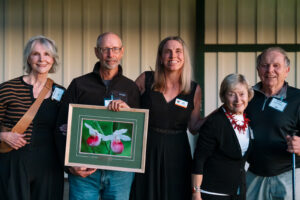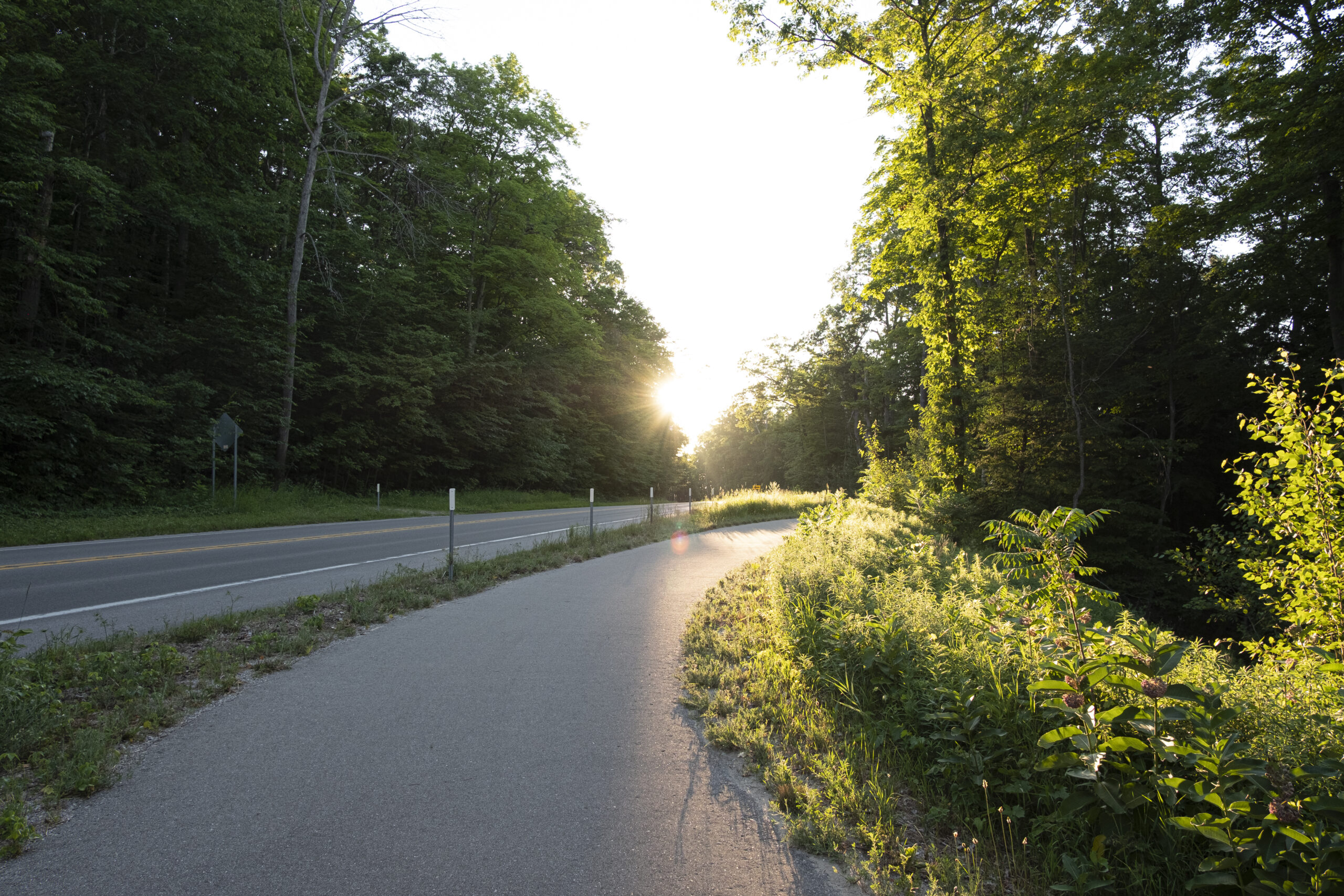Kerry Kelly, recipient of the TART Trails 2024 Jim Mudgett Trail Pioneer Award, has dedicated his retirement to enhancing our community’s trails with leadership, passion, and an inspiring hands-on approach. Growing up on a dairy farm in Wisconsin, Kerry developed a love for the outdoors, especially the agricultural history of the Sleeping Bear Dunes area. This connection led him to volunteer tirelessly for the Friends of Sleeping Bear Dunes, where his efforts have left an indelible mark on the trails we enjoy today.
After earning his BS in Chemistry from the University of Wisconsin in 1974, Kerry embarked on a successful 30-year career at Dow Chemical. His roles as a chemist, nuclear reactor operator, research manager, and new business development director showcased his exceptional skills in leadership and organization. Upon retiring in 2004, Kerry moved to the Traverse City area, bringing his talents and dedication to the Sleeping Bear Dunes National Lakeshore.
Kerry has been instrumental in various trail projects, most notably as Chairman of the Board of Friends of Sleeping Bear Dunes. Under his leadership, he has organized and oversees a team of volunteers who serve as Trail Ambassadors for the Sleeping Bear Heritage Trail (SBHT). This role involves regular trail maintenance, clearing debris in the summer, and grooming the trail for cross-country skiing and snowshoeing in the winter. Kerry’s leadership extends to managing large-scale projects such as the Kettles Trail, which boasts unique glacial topography.
Beyond building and maintaining trails, Kerry has encouraged and participated in the development of accessibility programs on the trails at Sleeping Bear Dunes National Lakeshore. The track chair program was the first of its kind in the National Park System to allow people with disabilities to experience some of our hiking trails. The wheelchair bike program will be operational in 2025 and will provide a ride on the SBHT for those with mobility issues.
In addition to his hands-on work, Kerry has played a key role in fundraising efforts, serving on the Campaign Cabinet for Phase II of the SBHT. He has helped secure critical funding through grant writing, personal outreach, and generous donations, including his own financial contributions with his wife Kathy.
Kerry’s contributions go far beyond trail work. His leadership, organizational skills, and positive attitude have made him a beloved figure among the Friends of Sleeping Bear Dunes and the broader community. Whether wielding a chainsaw or drafting a fundraising letter, Kerry’s dedication to improving and preserving our local trails has been unwavering. His humility and passion make him a deserving recipient of the Jim Mudgett Trail Pioneer Award, an honor that reflects his lifelong commitment to making our trails accessible and enjoyable for all.



